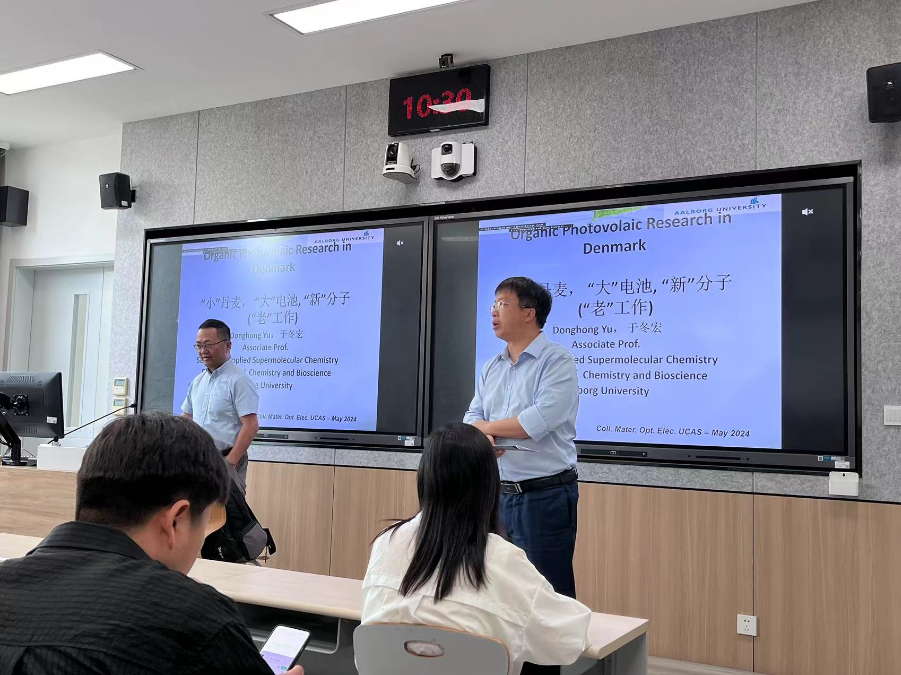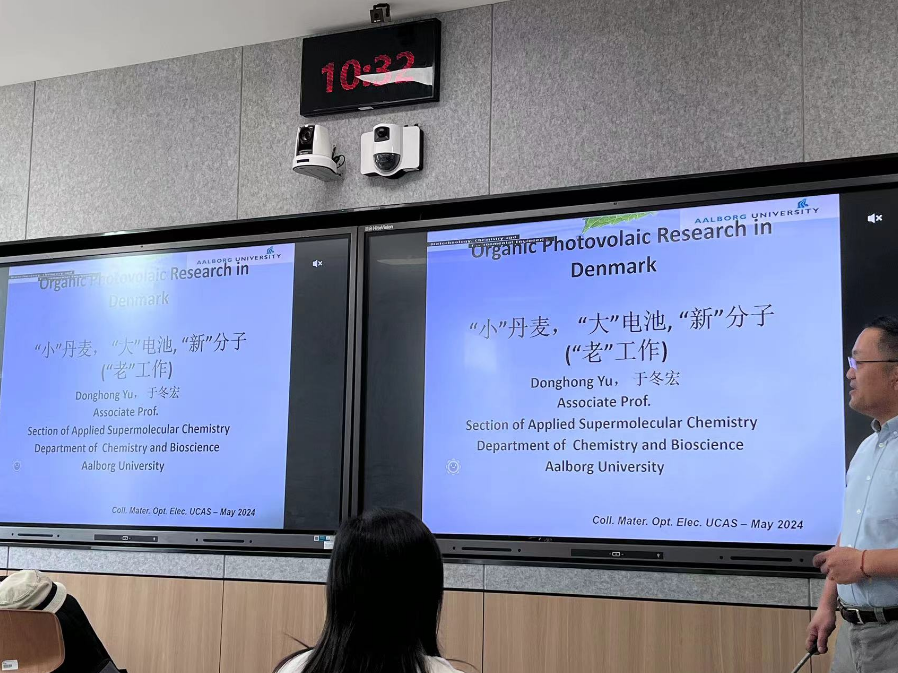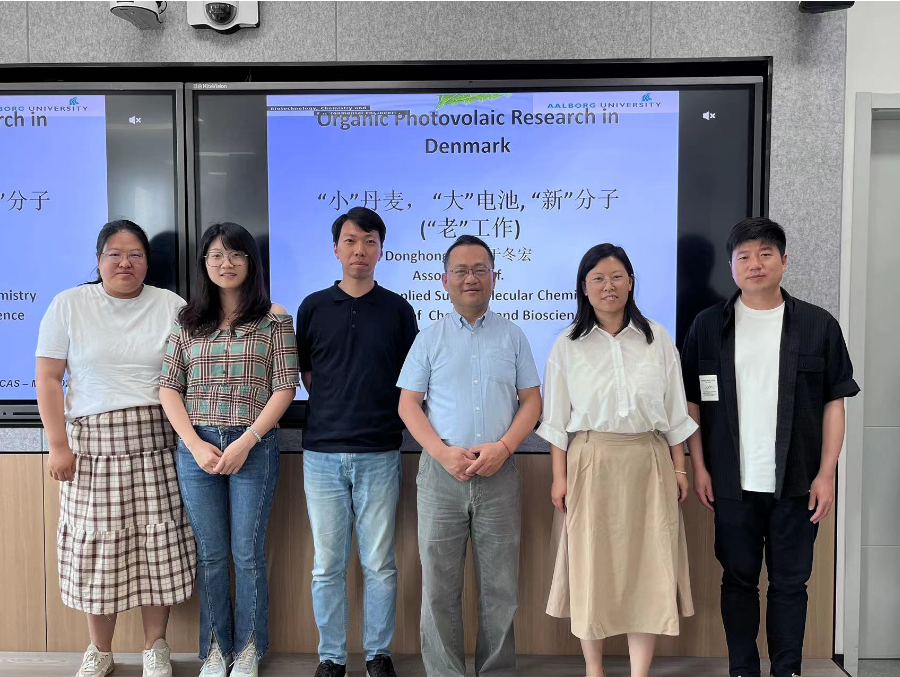On the morning of May 23, 2024, Professor Yu Donghong from Aalborg University in Denmark came to the University of Chinese Academy of Sciences at the invitation of Professor Huang Hui to give a lecture on the theme of "'Little' Denmark, 'Big' Batteries, 'New' Molecules". The lecture Located in Teaching One 115.


This lecture first introduces the scale-up synthesis experiment based on donor-acceptor polymer materials with reasonable molecular orbital energy levels, making it a continuous flow method with high molecular weight and constant mass, which can significantly increase the reaction rate and yield. The rate reaches the order of hundreds of grams per day.
Then, for traditional polyphenylene materials, we continued to use the fullerene acceptor system and applied roll-to-roll large-area rapid printing to create a large-area organic photovoltaic module composed of 40,000 single-junction cells, and at the same time generated electricity. Perform DC-AC conversion, simulate the grid input and output of energy, and ultimately reveal the possibility of organic photovoltaic power generation and transmission in the power grid in the future.
Finally, it will be explained that the traditional main chain skeleton conjugated donor/acceptor polymer materials cannot achieve ideal nanometer-sized self-assembly due to limitations of polymerization methods, which seriously affects the charge (carrier) separation and subsequent follow-up in photoexcitons transmission.
At the end of the lecture, Teacher Yu and everyone discussed the structural design and possible synthesis of new concepts of conjugated structure polymers. The lecture aroused heated discussion among teachers and classmates.

Professor Yu Donghong worked at the State Key Laboratory of Polymer Chemistry and Physics at Changchun Institute of Applied Chemistry, Chinese Academy of Sciences, the National Institute of Materials and Chemistry, Institute of Industrial Technology, Japan, and the Mechanics Department at Aalborg University, Denmark, from 1997 to 2006. He serves as an assistant professor, special research fellow, research assistant professor, and assistant professor in the Department of Engineering and the Department of Chemistry and Biological Sciences. From 2006 to the present, he is a tenured associate professor in the Department of Chemistry and Biological Sciences at Aalborg University, Denmark. Research areas include organic solar cell materials, polymer light-emitting diodes, molecularly imprinted polymers (molecular recognition, biosensing) and inorganic-organic nanohybrid biomaterials. It has successively undertaken funds from the Danish Ministry of Technology and Innovation, the Danish National Natural Science Foundation and the Danish National Strategic Research Fund, with a total scientific research funding of more than 20 million Danish kroner. He published 152 academic papers, which were cited 4030 times by him. In 2009, he won the Best Teacher Award from Aalborg University, Denmark.


